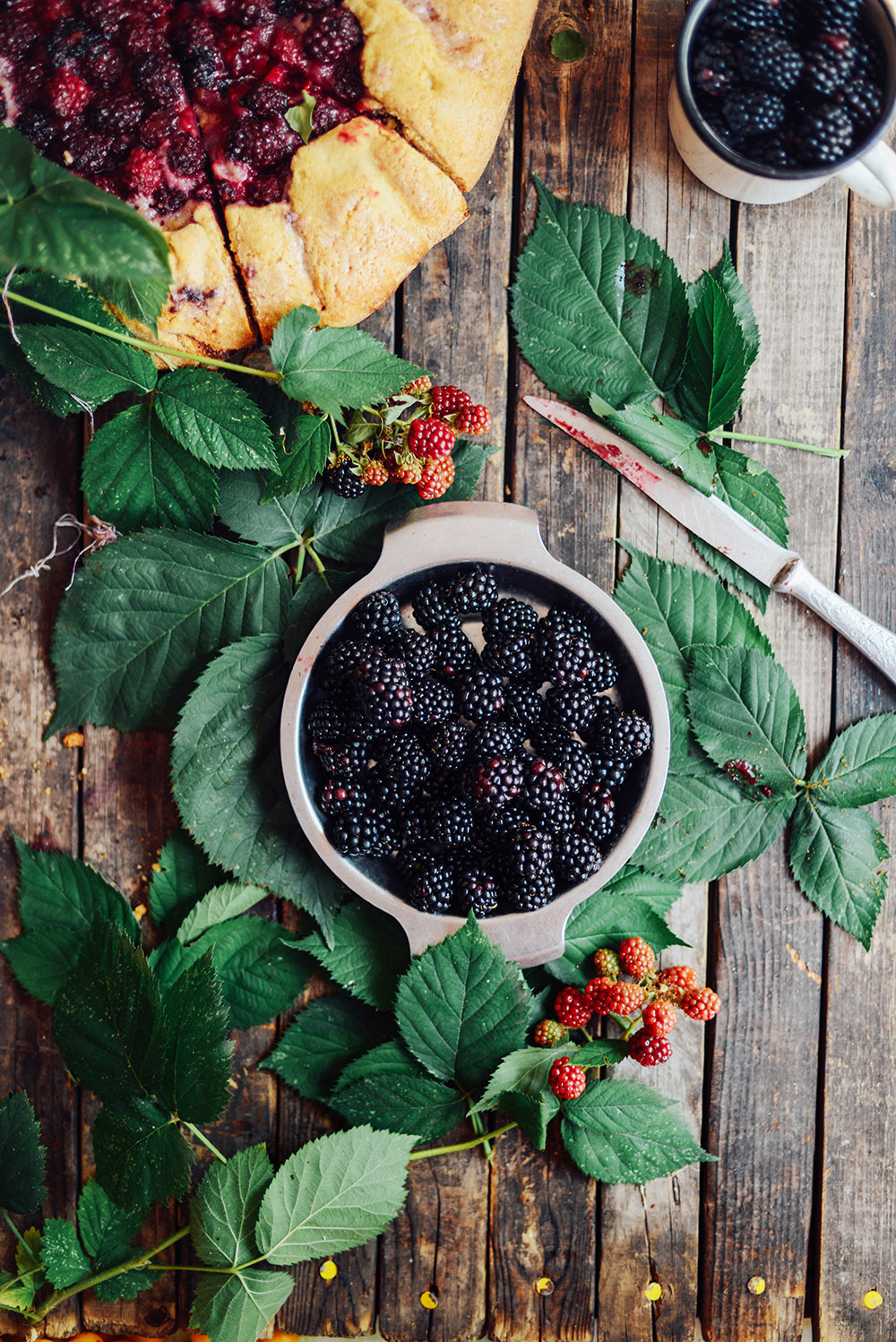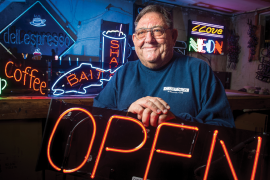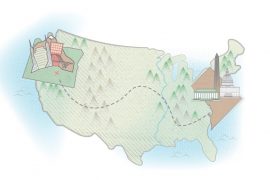written by Eswen Allison Hart
Forests of blackberry bushes flourished in the undeveloped blocks south of our house in the valley. In late summer, we rode our bikes past the mown lawns and new ranch-style houses, beyond where the sidewalks ended and disorder began. We carried old cans in my white, flowered bike basket or in a bag looped over my brother’s stingray handlebars. Sometimes our parents came along to harvest the highest berries.
But many of the berries were within our reach—we had ramps of boards culled from the constant construction of new homes that got closer every year. These discards were casually tossed up and onto the bushes, creating a sort of boardwalk into the air, lifting us beyond the easy picking at eye level. If we fell off a board, we knew, there was certain death, or something like it, in the tangle of brambles below. But we never fell.
The blackberries were a labyrinth of undergrowth—there were paths and alleys worn between the bushes, much like an overgrown Victorian library, its aisles crowded with thorns and leaves and overhung with alder branches snagged by striving canes. The sky above was blotted out by impenetrable thicket—within this copse we stood on boards or on the duff and smashed berries. Insects sleepwalked in the still, buzzing near-silence of these gothic halls of vegetation.
The days were long and hot in the valley, so we tended to wait for our picking until about the time the sprinklers came on after dinner. The blackberry leaves were still dusty warm but the brambles seemed somehow less sharp in early evening. By the time we’d filled our cans, our arms and legs were covered with scratches, some smeared purple with blackberry juice, some healing over from earlier visits.
We had no incentive to pick the berries except for the promise of pie. Most of the berries, however, went into making jam—quarts and quarts of homemade jam. As a child, I didn’t know there was any other kind. And I didn’t realize that a person could buy jam—that I myself would buy jam—until I moved away from Oregon and wanted some for my toast.
My mother needed dozens of brimming cans to make jam enough to see our family through the year. The jam was good, but we took it for granted. The pie was better, and more immediate. A pie could be made right then, that night, and eaten still warm with ice cream while the sprinklers were still going and the sky was not yet completely dark.
Those blackberries of my childhood are gone, replaced by houses and driveways and above-ground swimming pools and swingsets. But there are blackberries all around if you know where to look, and we still go out together to fill our buckets. I’ve experimented with blackberry crumble, blackberry crisp and blackberry tarts, but nothing has ever been so good as blackberries made into a real pie. A pie with a flaky browned crust (you have to leave the pie in the oven long enough to brown the crust), a pie not too sugary and not sticky with cornstarch. A pie that emerges from the oven bubbling with berries molten in their own juice. A pie filled to the brim with the ripest, sweetest blackberries, picked in my memory at the end of my street, out beyond where the neighborhood ended and the wilderness began.









